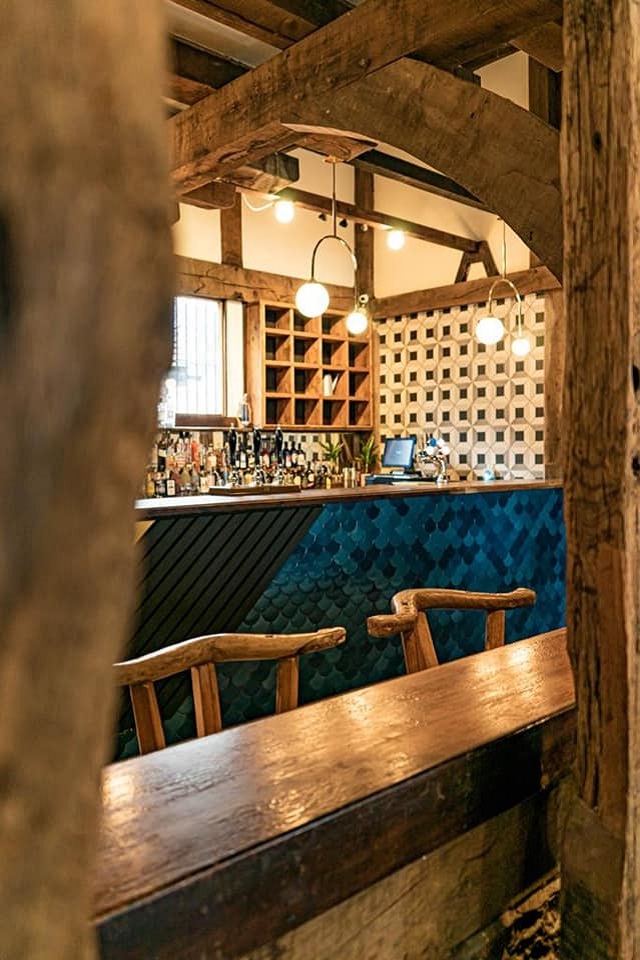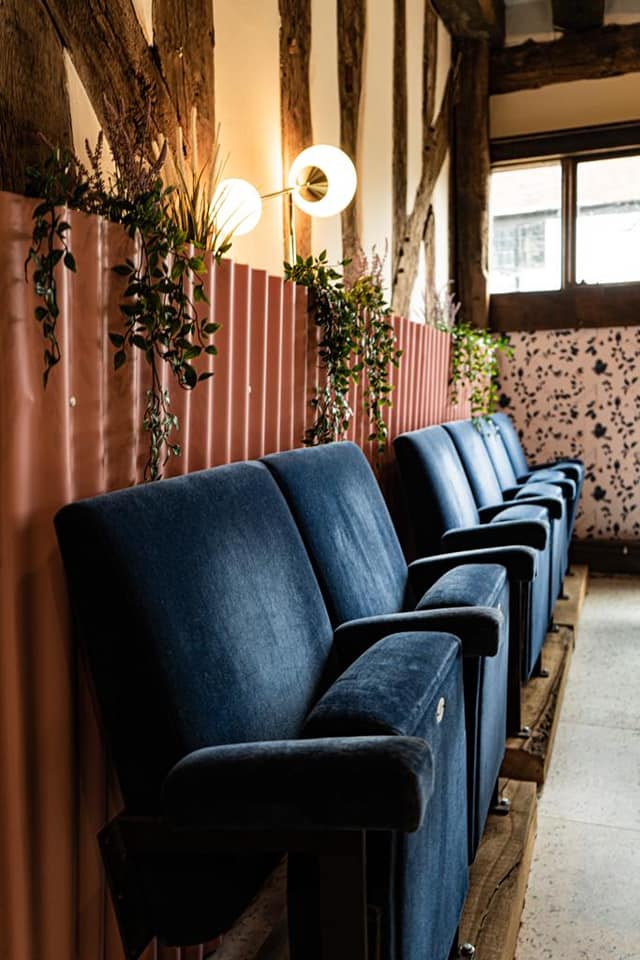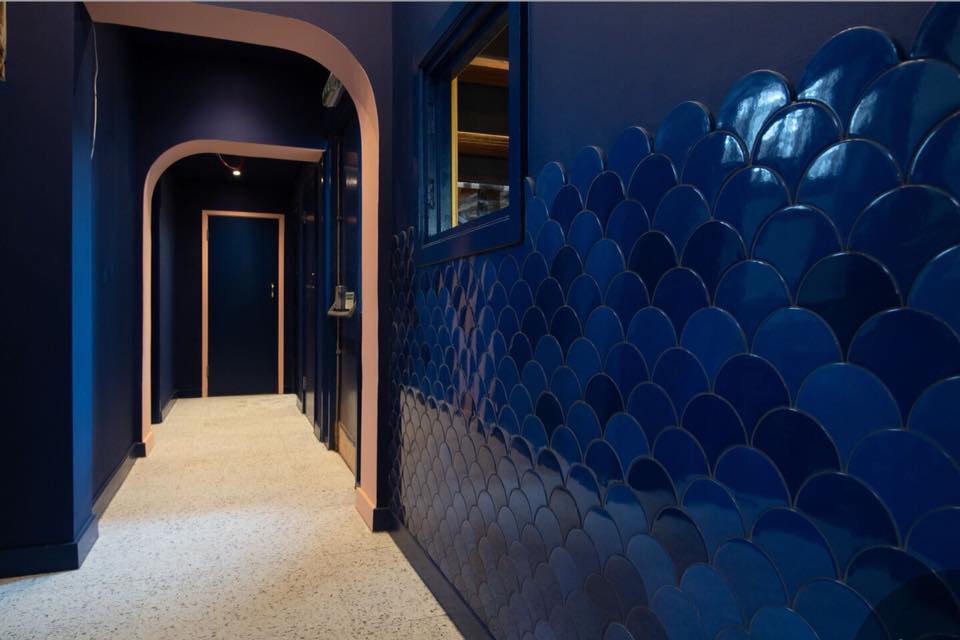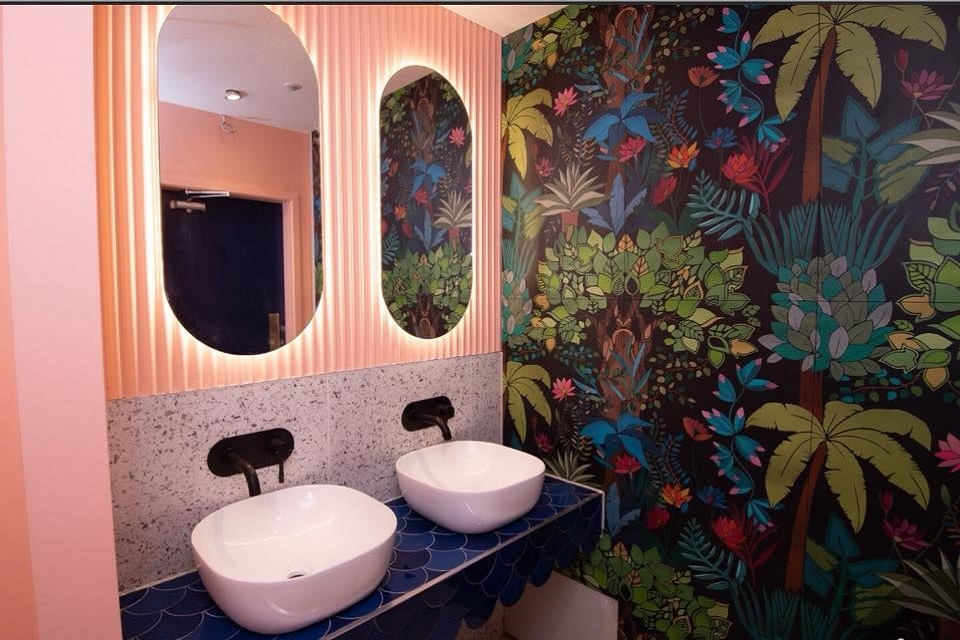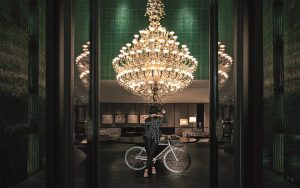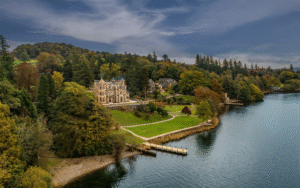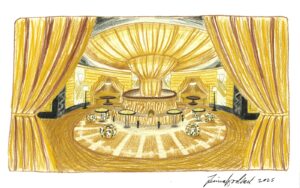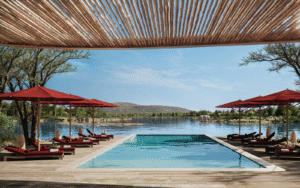Leanne Armstrong, Founder of Black Ivy Design, highlights how on two contrasting F&B projects – one 19th century speakeasy and one tavern inside a football club – she blends history, creativity and storytelling to transform these spaces into immersive and unforgettable experiences…
In an industry where design works as hard as the mouth-watering menus, designing a restaurant or a bar is more than mere aesthetics. From concept to completion, the design of any F&B area intended to evoke an experience becomes a powerful narrative, weaving together ambiance and identity, making each space not just stand out, but truly resonate with a unique and unforgettable character.
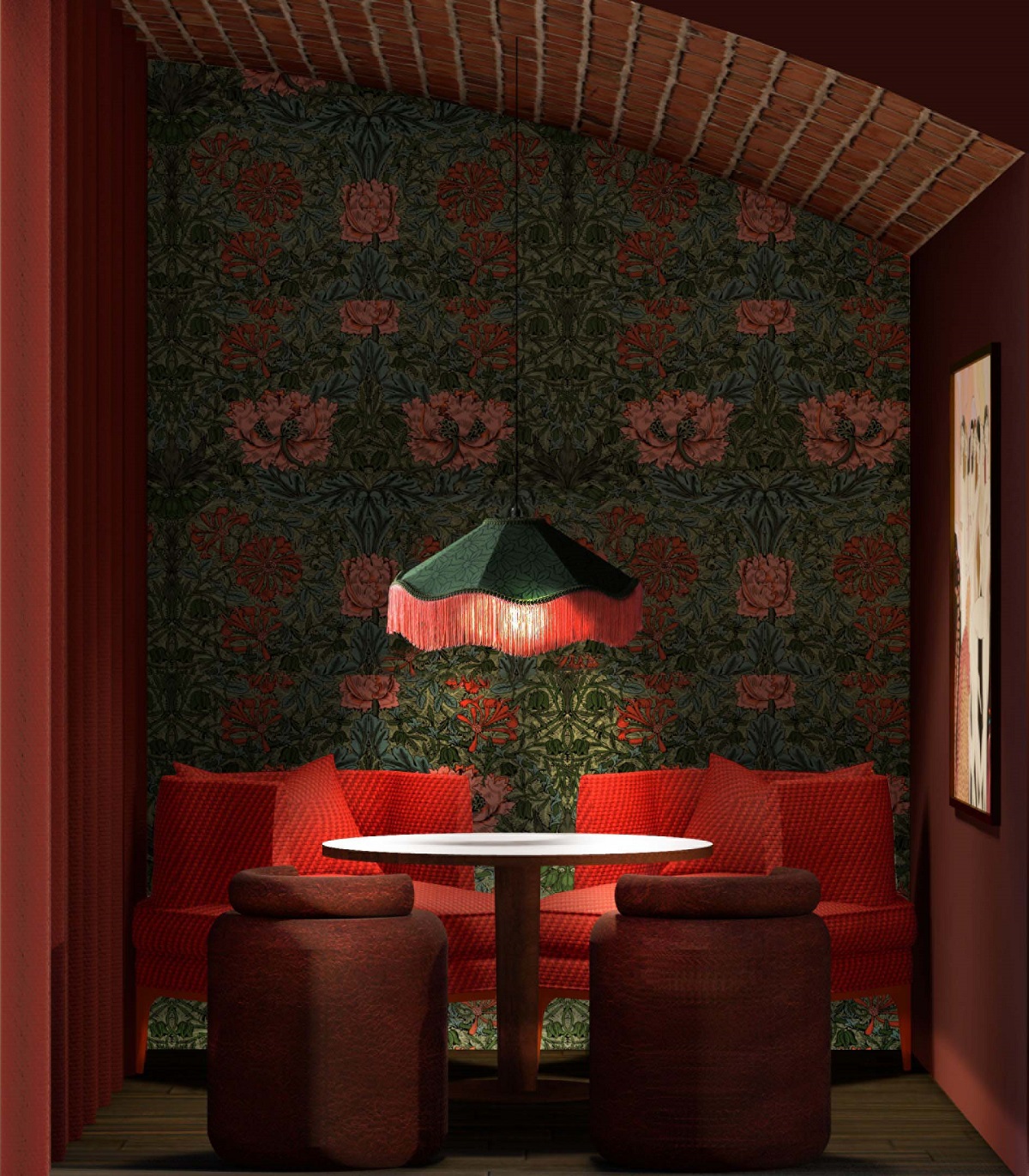
Image credit: Black Ivy Design
Designing hospitality spaces is a rewarding challenge, but when it comes to F&B venues, designers must push their and their clients’ boundaries of creativity even further, crafting environments that are not only fresh and surprising but also deeply aligned with the brand’s identity. Some might argue, however, that these spaces are more than just extensions of the hotel –they are dynamic canvases that add new, tangible layers to the guest experience, standing alone in some cases as vibrant, independent attractions within the broader hospitality landscape.
While every project will require a fresh perspective, the inquisitive approach from the designer – to delve into the fabric of the building – should never be toned down. In the initial concept stage, the goal is to understand the client and their customers – no amount of technology will ever change that. Extensive market research, the deeper the better, helps to paint a picture of the client’s target market so we can create a space that feels both familiar but also exciting.
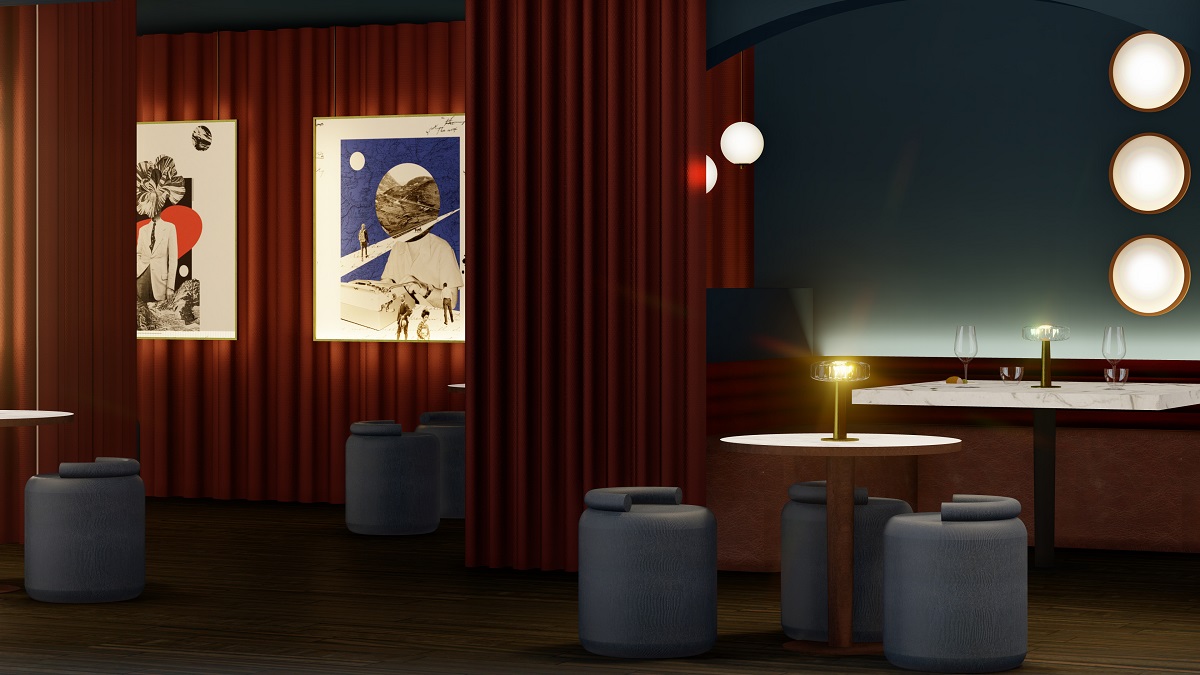
Image credit: Black Ivy Design
The design principles of storytelling
A narrative-driven approach to design enables us to subconsciously guide the guest and create a cohesive brand experience that is both familiar and unexpected in all the right areas. When design is driven by a story, the process of connecting with the ideal target customer becomes much more seamless. The principles of a good story include recognisable elements such as the narrative arc, punctuated by plot twists that keeps the space engaging. Design works in very much the same way.
History, art, fashion, architecture and local culture feed the narrative, allowing you to connect with your audience on common ground. Familiar zones are broken up by unexpected design elements that serve as the plot twist, allowing customers to feel like they have ‘discovered’ something.
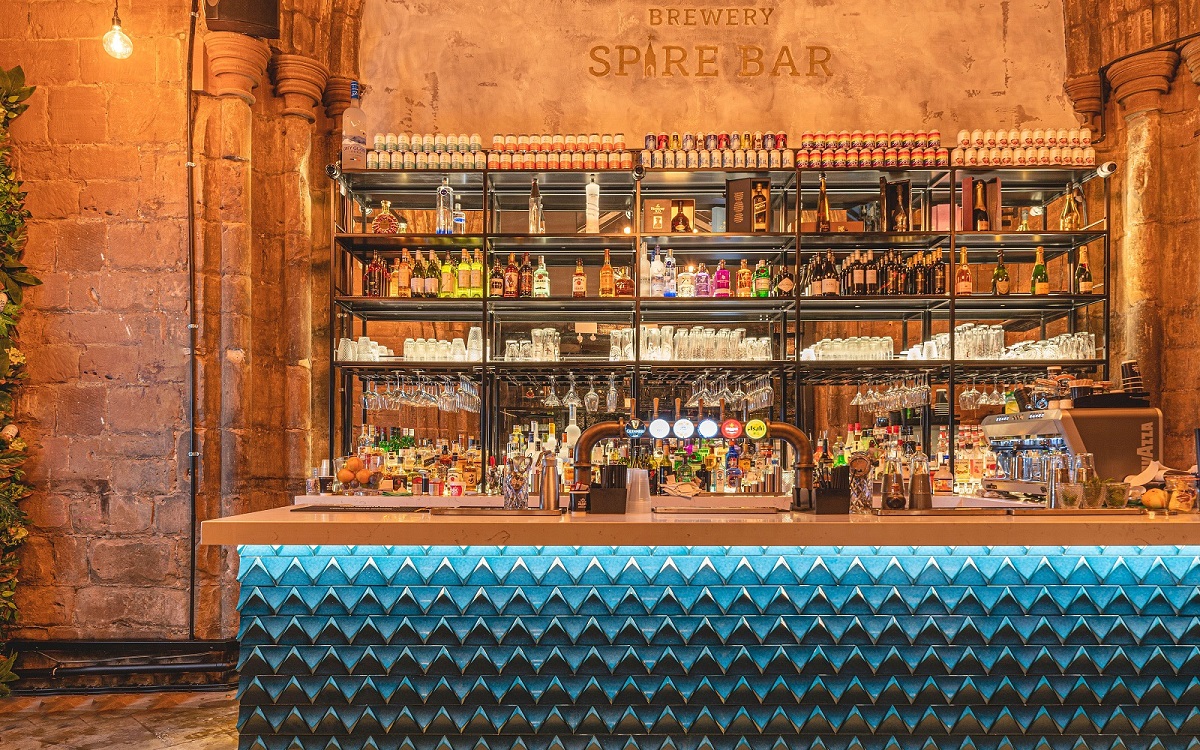
Image credit: Visually Rich
Celebrating original architectural features
For projects like Hush, a contemporary speakeasy set in the historic Victoria Colonnade in Leamington Spa, Warwickshire, Black Ivy Design were set the brief to seamlessly blend the building’s rich heritage with modern design elements.
Our design philosophy was driven by a deep respect for the historical significance of the 19th century architecture. We retained the charming brick archways and low ceilings of the original basement space, using these architectural features as a foundation for our design. The preservation of these elements maintains the building’s historic integrity while providing a unique backdrop for the modern bar. While we were inspired by the classic speakeasy, we wanted to play with the juxtaposition of vintage and contemporary elements to give Hush its own identity in Warwickshire’s hospitality scene.
Layers in lighting
Throughout projects that have such a rich history, selecting the right materials and design elements can sometimes feel limiting and, at times, intimidating. Lighting can therefore be a nuanced way to subtly create layers in not only the design, but also the overall hospitality experience. Inside Hush, for example, we utilised light to enhance the atmosphere and accentuate key features.
Instead of traditional ceiling lights, we employed a combination of uplights, wall sconces and concealed strip lighting. This simple yet effective technique creates a multi-layered effect, adding dimension and warmth to the space.
In the intimate nooks and seating areas, we opted for subtle, focused lighting to create cosy, inviting spots, while using art deco-inspired fabrics and wall coverings to contrast and highlight these areas. Additionally, we chose deep, rich colours and tactile textures to add further depth and sophistication. This meticulous attention to lighting design amplifies the overall experience, making each corner of the bar unique and inviting. The strategic placement of lighting also frames and highlights the artwork, making it a focal point of the interior design. By doing so, the lighting enhances the narrative of the space, guiding patrons through a visual and experiential journey.
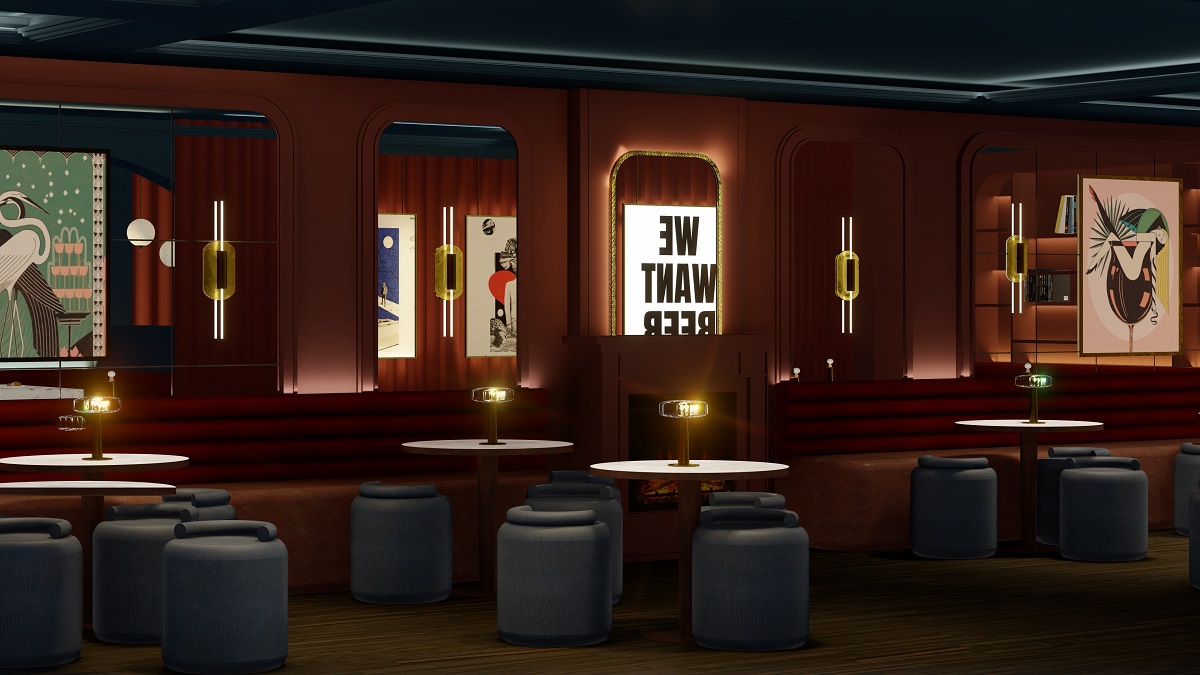
Image credit: Black Ivy Design
Art not just for art’s sake
Art was a significant component of our design for Hush, adding a personal and local touch to the bar, but also to add to the locality of the design scheme and project. We commissioned a local artist to create bespoke pieces specifically for our space, inspired by the Prohibition era. These artworks not only add visual intrigue but also reflect the cultural heritage of the speakeasy.
As with all touchpoints when creating spaces in hospitality, the artwork has to share the same design language as other elements in and around the room. Sometimes it will be the ‘hero’ – other times, it will be added layer that helps create a sense of place. To ensure the artwork remained the centrepiece, which was important for Hush, we used plain fabrics throughout the bar. This deliberate choice allows the art to perform, framed perfectly by our sophisticated lighting. Additionally, we meticulously illuminated a beautiful chenille fabric mural, which added a luxurious texture and richness to the space, complementing the overall aesthetic.
We designed Hush with the comfort and enjoyment of the guest in mind. We deliberately specified plush, ergonomic seating to encourage guests to relax and linger, a direction from the client from the beginning. This focus on comfort is intended to create a welcoming atmosphere where people can create lasting memories and increase dwell time. By combining historical charm with modern comforts, we have created a space where patrons feel both transported and at ease.
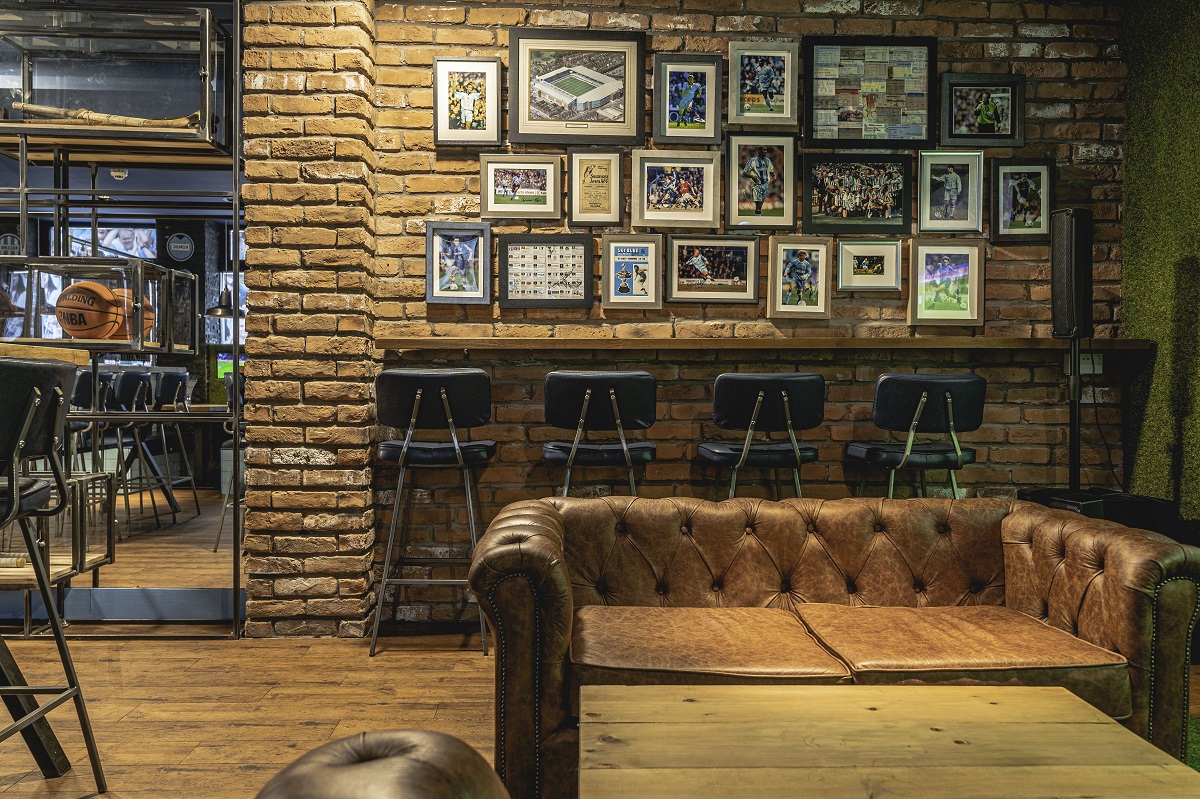
Image credit: Visually Rich
Functionality in design
Alongside the customer experience, it’s also essential to consider how staff will operate in the space – what’s the point of having a beautiful restaurant if the staff can’t manoeuvre themselves around it? For the customer experience to be unparalleled, the staff need to have the space to do their best work.
Zoning is one of the most effective ways to create a cohesive and logical experience for the customer, and this can be achieved using repetition in design elements. Slight variations in these repetitive elements helps to keep things unexpected and surprising, so the customer always feels like they have something new to discover.
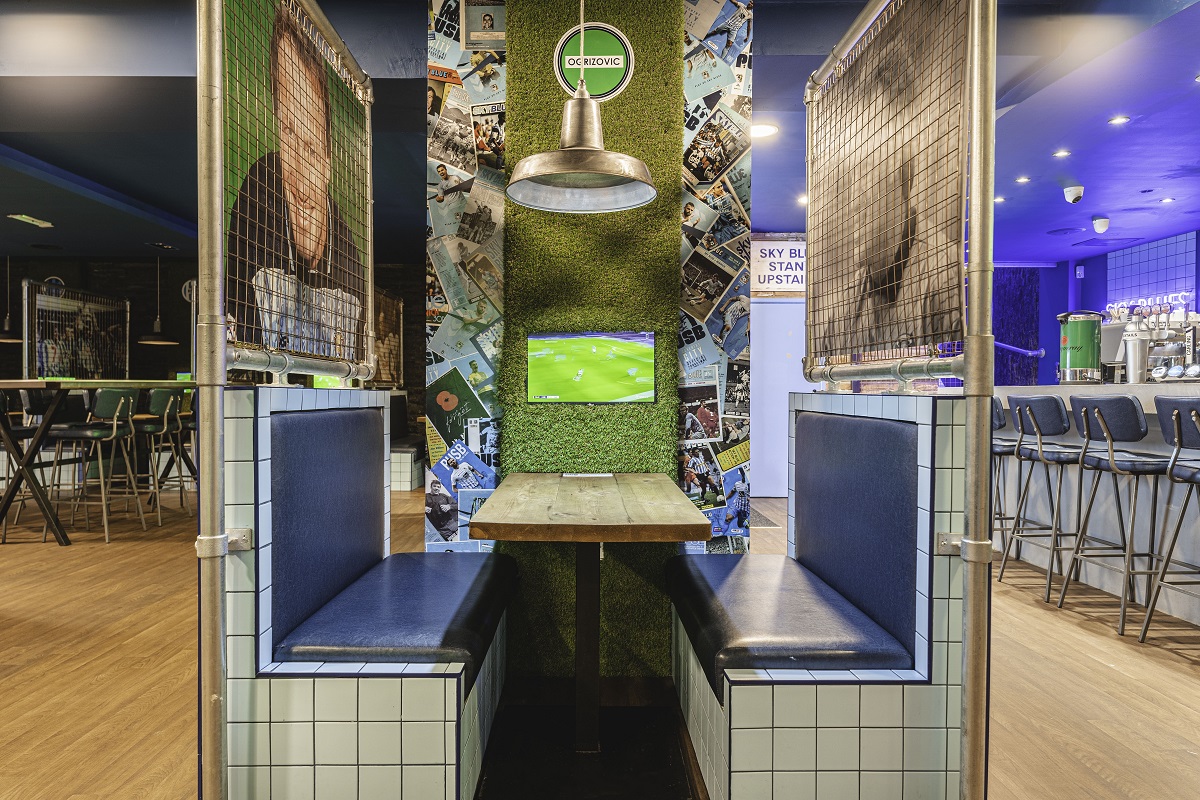
Image credit: Visually Rich
An element of surprise
Designing for the hospitality sector presents a unique challenge. How do we overcome the sense of ‘been there, done that’? The pursuit to create something ‘on trend’ or familiar can lead to boring, repetitive and diluted design notes. This is where attention to detail in the finishing touches can help to subvert expectations.
The power of surprise in design is essential for bar spaces. This can be achieved using smaller design elements that draw the eye and connect with the wider narrative. In designing the Sky Blue Tavern for Coventry City FC fans, the studio introduced recognisable elements from the stadium to help create a sense of belonging for the customers.
Unexpected design choices such as astroturf, raw steel, exposed brick and stadium seating are familiar to the guests but unexpected in their placement. In this project, nostalgia was an important part of the design, with iconic signs and beloved footballers taking fans back to the ‘glory days’.
And finally, the use of zoning allows customers to traverse the space in search of their ideal setting; whether that is a cosy booth with their own TV, or communal benches that unite fans in their shared interests.
The power of powder rooms
Designing the toilet in any bar or restaurant has become a significant and vital aspect of the overall design, particularly in hospitality. It’s an area where we can break the rules in pursuit of being creative and, without sacrificing functionality, think outside the box. There is no longer a tolerance among guests to accept toilets as ‘facilities’, they are an extension of the overall brand and design narrative and a great area to let creativity go wild. However, it is also a place where the design language between the two areas can meet.
In the women’s toilets at Hush, for example, we used a deep-red colour scheme cohesive with the main bar areas, complemented by more red and pink tones. We also included an art deco mural painted on the ceiling and top third of the wall, by another local artist weaving in the speakeasy theme to the space. Backlit full-length mirrors and perfectly lit vanity mirrors added an apt touch of glamour, making the space both functional and visually appealing.
Designing bars and restaurants is not just about creating a visually appealing space; it’s about crafting an experience that aligns with the brand’s identity and resonates with the customer on a deeper level. More than anything though, it’s about listening to the building and adding in elements that feel right.
From the meticulous preservation of historical elements to the innovative use of lighting and art, each design choice plays a pivotal role in telling a compelling story. By embracing both familiarity and elements of surprise, designers can create spaces that feel fresh, engaging, and – above all – memorable so that they return.
Main image credit: Black Ivy Design





